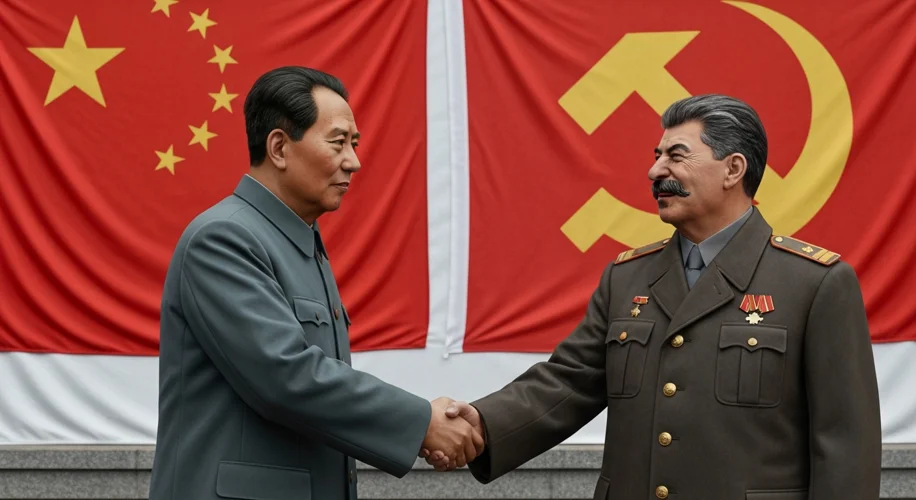In the annals of the 20th century, few relationships were as pivotal, and ultimately as fraught, as that between the Soviet Union and the People’s Republic of China. What began as a fraternal embrace, a beacon of communist solidarity, curdled into a bitter rivalry that reshaped the global geopolitical landscape. This was not a mere disagreement; it was an ideological earthquake, a seismic split that reverberated from Moscow to Beijing and beyond.
The Dawn of Brotherhood: A Marriage of Convenience?
The year 1949 marked a watershed moment. The Chinese Communist Party, led by the charismatic Mao Zedong, triumphed in a brutal civil war, establishing the People’s Republic of China. The Soviet Union, under Joseph Stalin, was the first to recognize the new regime, a symbolic gesture of solidarity that promised a powerful new communist bloc. The Sino-Soviet Treaty of Friendship, Alliance and Mutual Assistance, signed in 1950, seemed to cement this bond. Moscow provided crucial economic aid, technical expertise, and military support, helping the fledgling PRC rebuild and establish itself on the world stage. For Mao, this was a necessary alliance, a way to secure his revolution against Western hostility. For Stalin, it was a strategic masterstroke, extending Soviet influence into the heart of Asia.

However, beneath the veneer of unity, cracks were already beginning to form. Stalin, ever the autocrat, viewed China as a junior partner, a recipient of Soviet guidance rather than an equal. Mao, fiercely independent and deeply proud of his revolutionary achievements, chafed under this perceived condescension. The Korean War (1950-1953) further complicated matters. While China intervened to support North Korea, the Soviets played a more distant role, a move that fueled Chinese suspicions about Soviet commitment and willingness to confront the West directly.
The Thaw and the Growing Chill: Khrushchev’s Reforms and Mao’s Discontent
Stalin’s death in 1953 and the subsequent rise of Nikita Khrushchev brought about a period of

